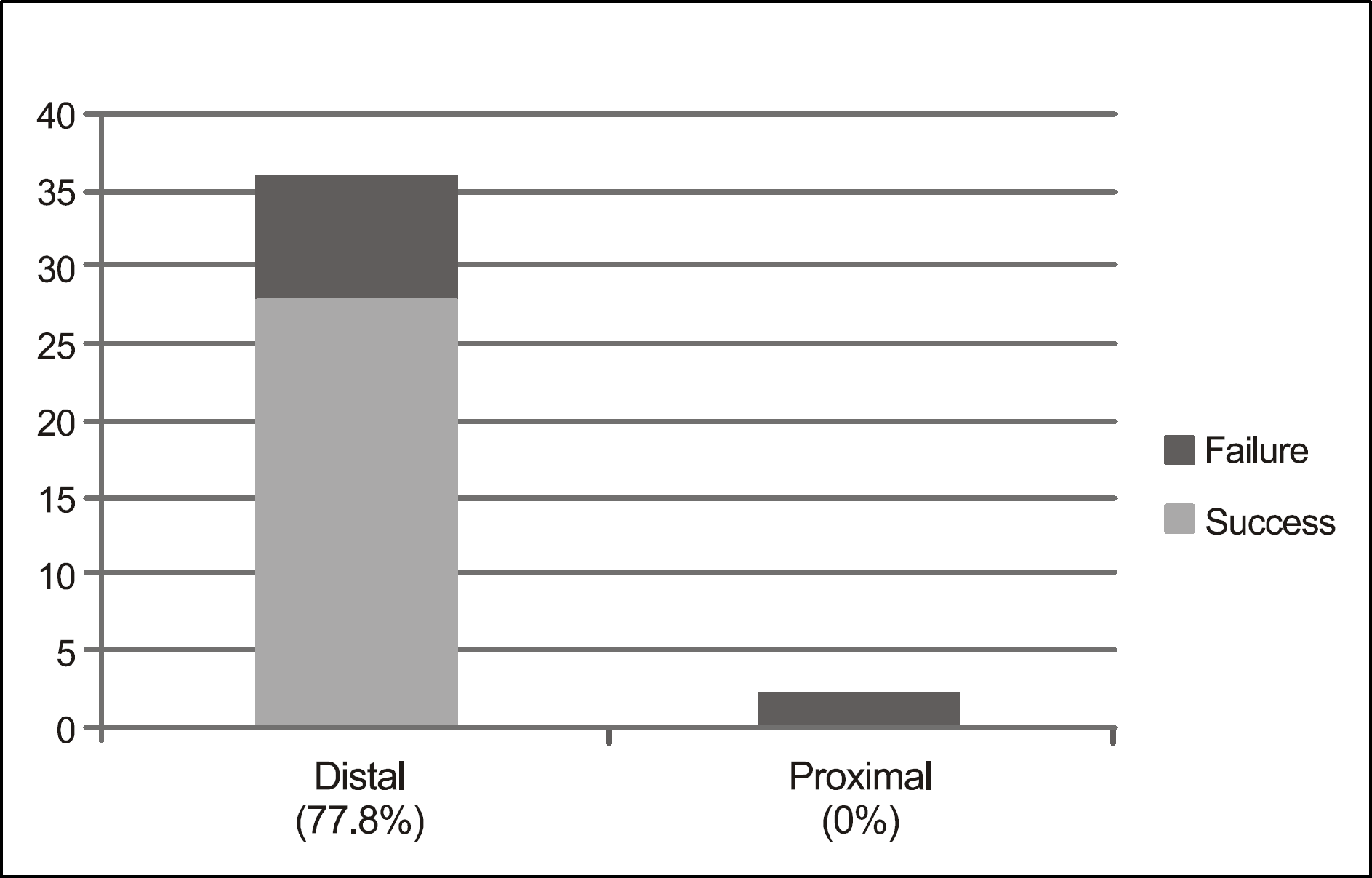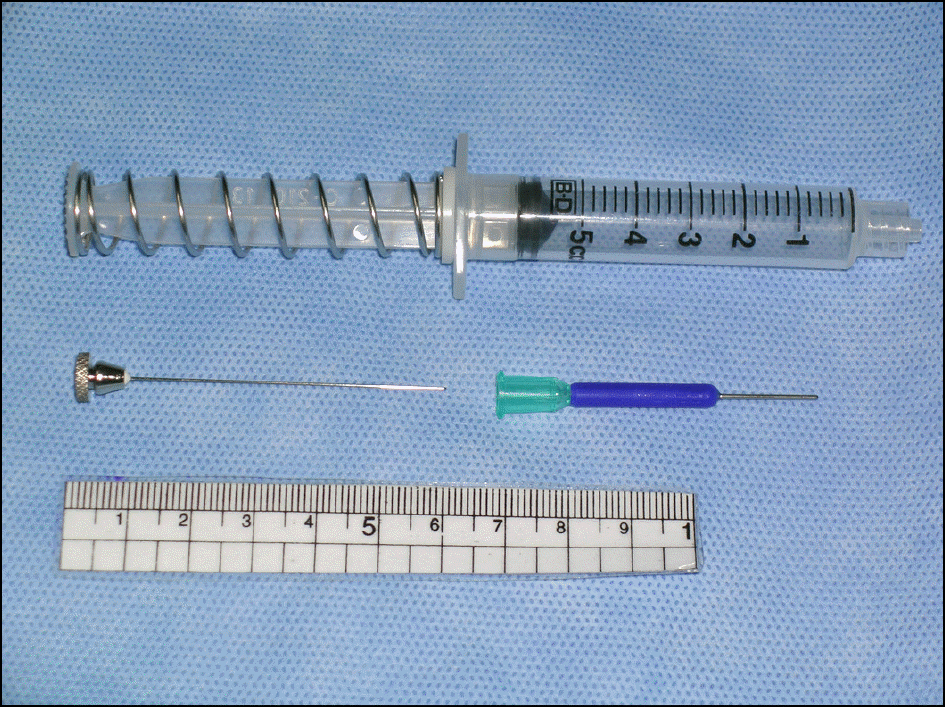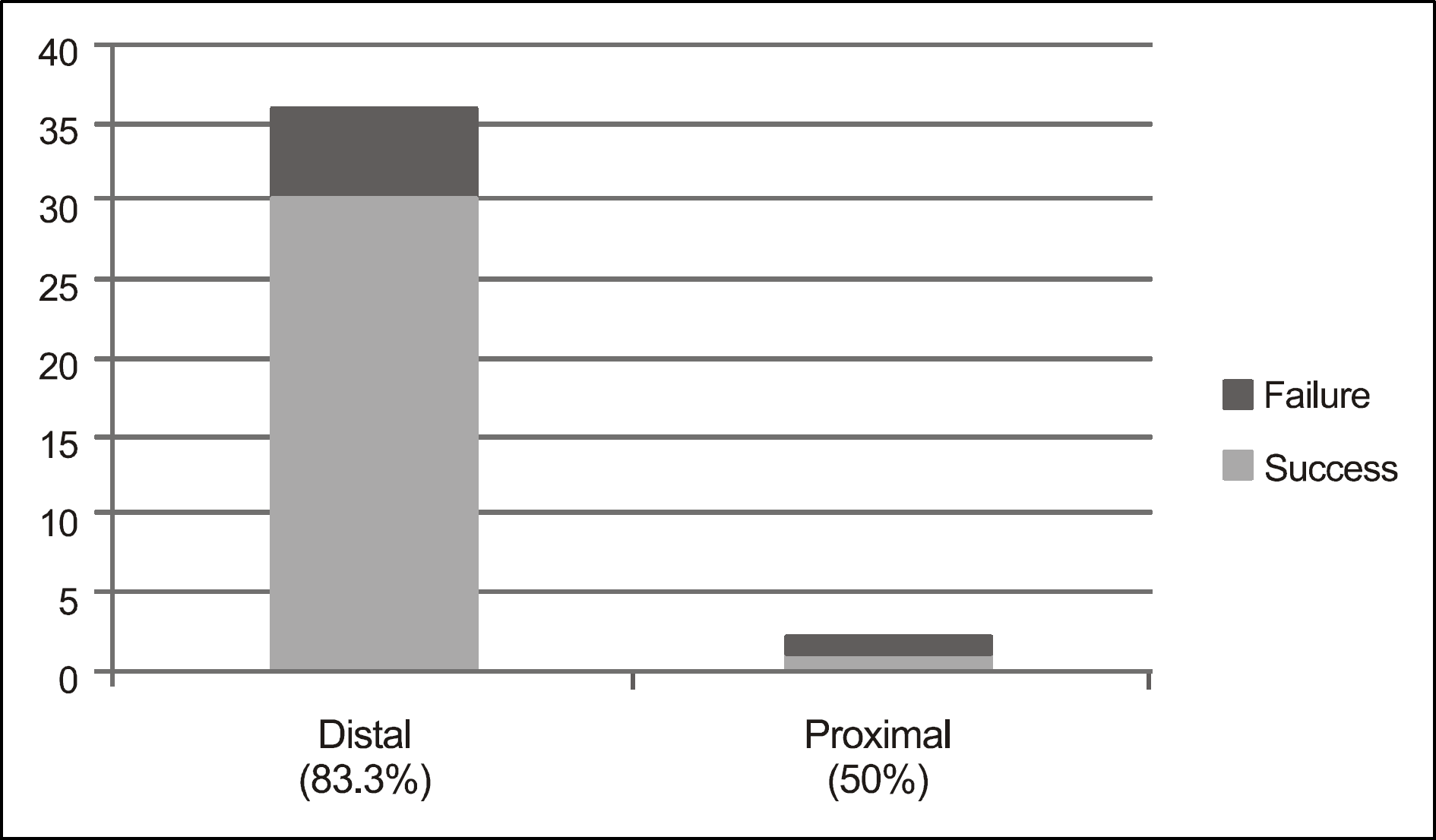Abstract
Methods
Silicone intubation following lacrimal trephination was performed in 38 eyes of 29 patients with epiphora due to canalicular obstruction between December 2005 and October 2009. Medical records were retrospectively reviewed and telephone interviews were performed. The severity of epiphora was graded by Munk's scale, and anatomical improvement was evaluated by postoperative probing and syringing.
Go to : 
References
1. Steinsapir KD, Glatt HJ, Putterman AM. A 16-year study of conjunctival dacryocystorhinostomy. Am J Ophthalmol. 1990; 109:387–93.

2. Khoubian JF, Kikkawa DO, Gonnering RS. Trephination and silicone stent intubation for the treatment of canalicular obstruction: effect of the level of obstruction. Ophthal Plast Reconstr Surg. 2006; 22:248–52.

3. Jones LT. The cure of epiphora due to canalicular obstruction or trauma and surgical failures of the lacrimal passage. Trans Am Acad Ophthalmol Otolaryngol. 1962; 66:506–24.
4. Rosen N, Ashkenazi I, Rosner M. Patient dissatisfaction after functionally successful conjunctivodacryocystorhinostomy with Jones tube. Am J Ophthalmol. 1994; 117:636–42.

5. Sekhar GC, Dortzbach RK, Gonnering RS, Lemke BN. Problems associated with conjunctivodacryocystorhinostomy. Am J Ophthalmol. 1991; 112:502–6.

6. Bartley GB, Gustafson RO. Complications of malpositioned Jones tubes. Am J Ophthalmol. 1990; 109:66–9.

7. Welham RA. Canalicular obstruction and the Lester-Jones tube what to do when all else fails. Trans Ophthalmol Soc U K. 1973; 93:623–32.
8. Sisler HA, Allarakhia L. New minitrephine makes lacrimal canalicular rehabilitation an office procedure. Ophthal Plast Reconstr Surg. 1990; 6:203–6.
10. Park BS, Jang JW, Byon DS. Treatment of common canalicular obstruction using lacrimal trephine. J Korean Ophthalmol Soc. 1998; 39:1077–81.
11. Munk PL, Lin DT, Morris DC. Epiphora: treatment by means of dacryocystoplasty with balloon dilation of the nasolacrimal drainage apparatus. Radiology. 1990; 177:687–90.

12. Jones LT. Lacrimal surgery. Tessier P, Callahan A, Mustarde JC, Sayler KE, editors. Symposium on Plastic Surgery in the Orbital Region. St. Louis: CV Mosby;1976. p. 129–35.
13. Burger D. Conjunctivodacryocystorhinostomy: curse or cure? Trans Ophthalmol Soc N Z. 1984; 36:59–60.
14. Nissen JN, Sørensen T. Conjunctivorhinostomy. A study of 21 cases. Acta Ophthalmol. 1987; 65:30–6.
Go to : 
 | Figure 2.Preoperative and postoperative Munk's scale. We used a reduction of epiphora to grade 0, or 1 as the criterion for success. On average, 73.7% of eyes had substantial improvement of epiphora. |
 | Figure 3.Improvement of epiphora according to the level of obstruction. We defined the improvement of epiphora as post-operative Munk's grade 0, or 1. |
Table 1.
Munk's scale




 PDF
PDF ePub
ePub Citation
Citation Print
Print




 XML Download
XML Download